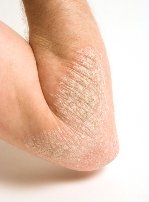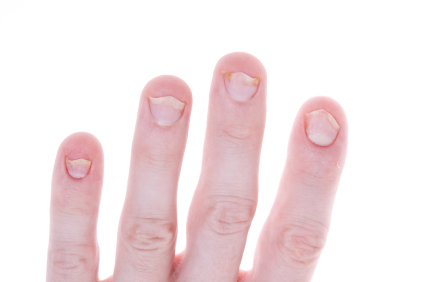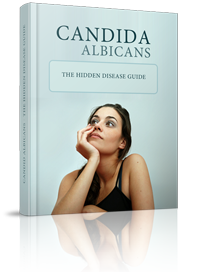Psoriasis Causes
A Candida overgrowth is one of the main Psoriasis Causes. Research shows that Candida albicans is present on the skin of psoriasis patients as well as in the intestinal tract. Once the Candida was brought under control, the skin plaques cleared up.
What is Psoriasis?
Psoriasis is a disease which affects the skin and joints. The main effects are red scaly patches on the skin.
These scaly patches, called psoriatic plaques, are areas of inflammation and excessive skin production. The skin rapidly accumulates at these sites and takes a silvery-white appearance.
Psoriasis usually affects the elbows and knees, but can affect any area including the scalp, genitals, fingernails and toenails. It can also cause inflammation of the joints, which is known as psoriatic arthritis.
Psoriasis Causes
Recent clinical and experimental data favor the role of intestinal Candidiasis in seborrhoic dermatitis. 3 One study 1 compared the presence of Candida albicans in the saliva and feces of psoriatic patients to a control group. They proved that Candida is one of the psoriasis causes and that a Candida treatment program should be used along side any other treatment.
Anti-fungals were shown to cure 7 out of 9 patients with psoriasis of the palms.8
Another study 2 looked at patients with scalp psoriasis or seborrheic dermatitis of the scalp (psoriasis capillitii). Yeasts were found in half of the tongue cultures and in 1/8 th of the scalp scales. Nearly three quarters of the patients had massive yeast colonization in their stool specimens! 2,5 Further proof that Candida is one of the psoriasis causes.
A study in 1997 analyzed more than 40,000 patients and showed that patients with atopic dermatitis and psoriasis had elevated levels of Candida in the intestines. 4
The analysis showed that Candida colonization in the digestive tract can be one of the psoriasis causes.
One group of researchers 7 recommends performing a micro-biologic investigation (checking for viruses, bacteria and fungi like Candida). They go on to state that a trial of antimicrobial treatment should precede any plan to treat psoriasis patients with anything more than the simplest topical agents.
Results obtained with this approach compare favorably with those achieved with more usual anti-psoriasis treatments.
Infants can also get a type of psoriasis known as infantile seborrheic dermatitis 6. Research has shown that Candida yeast has a primary role in this psoriasis causes. Infantile seborrheic dermatitis often develops during the transition from breast feeding to using cow's milk.
Nail Infection
Over 80% of psoriasis sufferers have infected nails as well 10. This can be a part of the psoriasis or it can be a fungal infection of the nail known as Onychomycosis.
Either way the root cause is most likely Candida. Follow the Natural Cure and it should clear up. With any nail infection, it will take 6-18 months of treatment to get new healthy nails.
Psoriasis Treatments
If Candida is your psoriasis causes, the best way to treat it is with a treatment program. This program is composed of Six Steps that work together to conquer your Candida overgrowth. The Six Steps include all natural anti-fungals as well as a special diet to kill the fungus.
Many of the studies listed here treated the Candida overgrowth with oral nystatin. Nystatin, a weak antifungal drug, primarily targets intestinal yeast. It is fairly safe but there are side effects so use it only under a doctors supervision.
In one study 9, 4 cases of long term, bodily psoriasis (10-25 years) were cured with oral nystatin within several months. In another study, nystatin treatment created a fast and long-lasting regression of seborrheic dermatitis. 3
Nystatin is available by prescription only so you need to find a doctor that accepts Candida overgrowth as one of the psoriasis causes. You can search for a qualified local doctor here.
Another way to find an alternative medicine physician is to visit the local health food store and ask the owner. Most likely other customers have discussed their physicians with the owner at one time or another.
Summary
As you can see, there have been numerous studies published that have correlated dermatological diseases with Candida of the skin and gastrointestinal tract (i.e. Candida is one of the main psoriasis causes).
You might think that the publication of this information would provoke a revolution in the medical care of psoriasis.
However, this is not the case. If you follow the money trail, you'll see that there would be a considerable loss of profits for both pharmaceutical companies and doctors if every psoriasis patient cured themselves with natural anti-fungals.
Therefore they will continue to treat psoriasis as if it is incurable and you will be stuck with ineffective treatments.
Do yourself a favor, try the Natural Candida treatment. It is inexpensive, safe, available without a prescription and may just put you on the road to true, vibrant health once again!!
Psoriasis causes are discussed on pages 18 & 19 in the book "Candida Albicans - The Hidden Disease".
Recommended Reading
These books go into more depth on the psoriasis causes. If you or a loved one is afflicted, inform yourself as much as you can.
It is up to you to take control of your health. The medical establishment is more concerned with making money than any one patients outcome. It's sad but true.
eBooks - Download Instantly
- Wilson, Katy (1999) Psoriasis Free For Life. eBook. Download Now!
Katy Wilson suffered from Psoriasis for 15 years. She cured it with a natural method in just 3 days! She has helped many thousands of Psoriasis sufferers do the same. Her "homemade remedy" works in harmony with your body's natural defense system. Try it today and be Psoriasis Free For Life!
- Jordyn, Jenelle (2009) Psoriasis Essentials. eBook. Download Now!
Jenelle Jordyn is a natural health enthusiast. She believes (as I do) that it's almost always best to treat medical conditions naturally. Psoriasis Essentials covers the many psoriasis causes, how to determine which type of the condition you suffer from and the best treatment options based on your particular situation.
Hardcover and Paperback Books
- Kaufmann, Doug A. (2002) The Germ that Causes Cancer. Mediatrition. ISBN-0970341814
Doug Kaufmann has studied Candida for years and has written 9 books on the subject. He knows what causes cancer - it is Candida. This is the most definitive book I have ever read on the subject of the link between cancer and fungi. It is well thought out and superbly researched. This book is a must for anyone who has cancer or anyone with a family or friend with cancer. I hope more people use it for PREVENTING cancer! The program is easy to follow. I appreciate the easy to understand scientific documentation.
References
1.Waldman, A et al (May 2001). "Incidence of Candida in psoriasis--a study on the fungal flora of psoriatic patients." Mycoses 44(3-4): 77-81. [Abstract]
2. Senff, H, et al. (Jan 1990). "Studies on the yeast flora in patients suffering from psoriasis capillitii or seborrhoic dermatitis of the scalp." Mycoses 33(1): 29-32. [Abstract]
3.Buslau, M., Hänel, H., and Holzmann, H. (Oct 1989). "The significance of yeasts in seborrheic eczema." Hautarzt 40(10): 611-13. [Abstract]
4. Henseler, T. and Tausch, I. (1997). "Mycoses in patients with psoriasis or atopic dermatitis." Mycoses 40 Suppl 1: 22-28. [Abstract]
5. Buslau, M., Menzel, I. and Holzmann, H. (Feb 1990). "Fungal flora of human faeces in psoriasis and atopic dermatitis." Mycoses 33(2): 90-94. [Abstract]
6. Oranje, A.P., et al. (Jul 1987). "Is juvenile seborrheic dermatitis a candidiasis? Studies of a possible link with microbial infections." Tijdschr Kindergeneeskd 55(3): 87-92. [Abstract]
7. Rosenberg, E.W., et al. (Apr 1994). "Microorganisms and psoriasis." J Natl Med Assoc 86(4): 305-310. [Abstract]
8. Rosenberg, E.W., et al. (1994). "Psoriasis of the palms and soles is frequently associated with oropharyngeal Candida albicans." Acta Derm Venereol Suppl 186: 149-150. [Abstract]
9. Crutcher, N., et al. (Apr 1984). "Oral nystatin in the treatment of psoriasis." Arch Dermatol 120(4): 435-436. [Abstract]
10. Larsen1, G.K., et al. (May 2003). "The Prevalence of Onychomycosis in Patients with Psoriasis and other Skin Diseases." Acta Dermato-Venereologica 83(3): 206-209. [Full Report]
Home > Psoriasis








New! Comments
Have your say about what you just read! Leave me a comment in the box below.